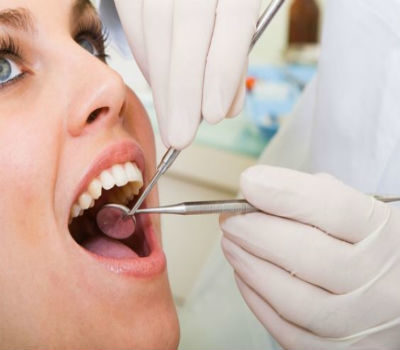
Self Tests to Identify Halitosis
Halitosis, or bad breath, is common in everyone’s lives and it can difficult to treat. It is caused by the bacteria living inside the human mouth and thriving on remaining food particles. When consuming these nutrients they emit gases that we identify as bad breath. The problem with this affliction is that it is difficult to identify personally without the help of anyone else.
The problem with self-testing for a bad breath is that we can’t exactly smell our own breath. Due to the construction of our olfactory sense, with our nose basically being connected to the mouth, we tend to ignore this background smell that is present with us at all times. This makes it tricky for someone to realize that he or she has a bad breath without another individual smelling the odor. There are however a few tricks that would allow us to identify the smell of our breath and here’s how.
 The first test is simple and anyone can perform it in a few seconds. Lick the back of your hand or your wrist and wait for the saliva to dry out. Once it’s dry, smell the area which you just licked to identify the quality of your breath. The problem with this test is that it actually shows how the tip of your tongue smells and it is not an accurate representation of your breath in general. The front section of the tongue can actually clean itself, therefore there is less bacteria to be found here than in rest of the mouth. For the next, more accurate test, you should take a spoon and scrape the back of the tongue with it. The smell of the saliva which you scrape will most likely be worse than that from the tip of the tongue as there will be far more bacteria. The color of this saliva can also be a clue as it has been shown that those with halitosis will have a yellow or even brown saliva at the back of the tongue.
The first test is simple and anyone can perform it in a few seconds. Lick the back of your hand or your wrist and wait for the saliva to dry out. Once it’s dry, smell the area which you just licked to identify the quality of your breath. The problem with this test is that it actually shows how the tip of your tongue smells and it is not an accurate representation of your breath in general. The front section of the tongue can actually clean itself, therefore there is less bacteria to be found here than in rest of the mouth. For the next, more accurate test, you should take a spoon and scrape the back of the tongue with it. The smell of the saliva which you scrape will most likely be worse than that from the tip of the tongue as there will be far more bacteria. The color of this saliva can also be a clue as it has been shown that those with halitosis will have a yellow or even brown saliva at the back of the tongue.
These simple tests are enough to prove whether you have a foul breath. If still not certain and if you are having doubts, the safest way of determining bad breath is by asking a second opinion. Ideally it would be to ask a dentist to analyze the odor as they are experts and this is part of their duty, but anyone else could do just as well. If your the odor of your breath is bad, it will be easily noticed by a second person that is not used to the smell as you are.
Conclusion
Self-testing can be done easily and determining the quality of your breath can take less than a minute. It is, however, advisable to seek professional help from a dentist as he can assess the damage far more accurately and offer advice or treatment on how to cure the root of the problem.
TOP 5
BODY ODORTreatments |
|||||
| Body & Breath Fresh | Progressive Health Clorial | Body Mint | Native Remedies HaliTonic | Hyperbiotics Pro-Dental | |
|---|---|---|---|---|---|
| 1 | 2 | 3 | 4 | 5 | |
| Price (1 bottle) Price (6 bottles) Best Value |
$23.30 $139.80 |
$33.30 $199.80 |
$19.95 $119.70 |
$39.95 $239.70 |
$70.00 $420.00 |
| Overall Rating | 99.80% | 89.90% | 75.90% | 74.70% | 67.80% |
| Effectiveness |





|





|





|





|





|
| Speed of Results | Extremely Fast | Good | Average | Average | Slow |
| Quality of Ingredients | Premium | Good | Average | Average | Average |
| Customer Satisfaction Evaluation | 99% | 85.30% | 76% | 74.10% | 65.30% |
| Safety Evaluation | Safe for Use | Safe for Use | Safe for Use | Safe for Use | Safe for Use |
| Customer Service Rating |





|





|





|





|





|
| Reorder Rate | Highest | Good | Good | Average | Low |
| Return Policy | Risk Free | 180 days | 30 days | 365 days | Not available |
| Success Rate | 99.40% | 85% | 75.30% | 74% | 65.10% |

 Subscribe Now
Subscribe Now











